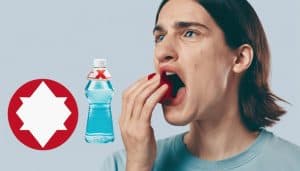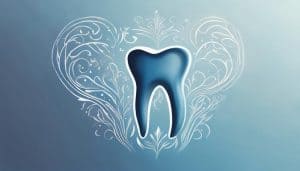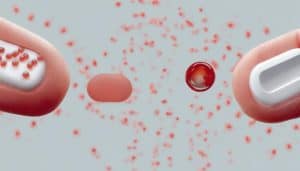You're wondering if you passed your drug test. Start by checking the control line for validity. If it's present, look for colored lines in the test region. If you see two lines in both regions, you've got a negative result, indicating drug concentration below the cutoff level. One line in the control region and none in the test region suggests a positive result. If the control line is missing, the test is invalid. Make sure you understand the results correctly to avoid misinterpretation. Now, explore the nuances of drug test results and what they really mean.
Key Takeaways
• A negative result is indicated by two colored lines in the Control and Test Regions, suggesting drug concentration below the cutoff level.
• A positive result is indicated by the presence of only one line in the Control Region, suggesting drug presence above the cutoff level.
• Faint lines in the Test Region are still considered negative, as they indicate drug concentration below the cutoff level.
• The absence of a Test Region line with a present Control line suggests a positive result, requiring further confirmation testing.
• If the Control line is missing, the test is invalid, and a retest is necessary to obtain accurate results.
Understanding Drug Test Results
When interpreting drug test results, you should focus on the presence and placement of lines in the Control and Test Regions to determine whether the test is negative, positive, or invalid.
If you've taken a urine drug test, understanding the results is essential to knowing whether you've passed or not. A negative result typically shows two colored lines in the Control and Test Regions, indicating no drug presence above the cutoff level.
On the other hand, a positive drug test result displays only one line in the Control Region, signaling the detection of drugs or their metabolites above the established threshold. In this case, confirmation testing may be necessary to validate the initial findings and rule out false positives.
Be cautious of invalid test results, which occur when no line appears in the Control Region, often due to procedural errors, insufficient sample volume, or faulty tests.
Reading a Drug Test Cup
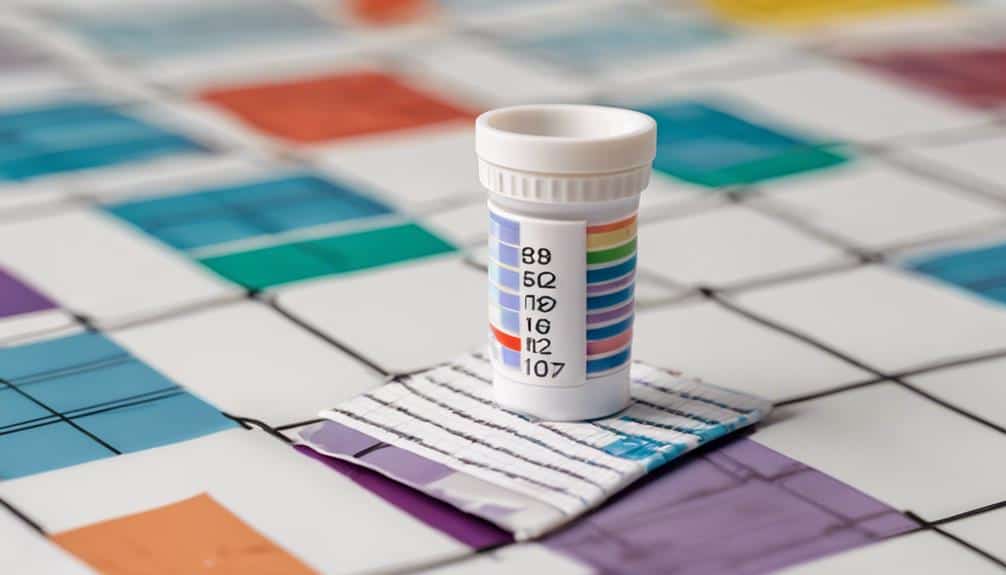
Examine the drug test cup carefully, as the presence and placement of lines in the Control and Test Regions are crucial in determining the test result. Start by checking the Control Region for a Control line, which confirms the test's validity. If you don't see a Control line, the result is invalid, and you'll need to retake the test.
Next, focus on the Test Region (T). Look for colored lines, which indicate the presence or absence of specific drugs. A colored line in the Test Region doesn't necessarily mean you've failed; it's important to interpret the results correctly.
A line in the Test Region doesn't guarantee a negative result, as it may indicate the presence of a drug. Conversely, the absence of a line in the Test Region, accompanied by a Control line, suggests a positive result.
Identifying a Negative Result
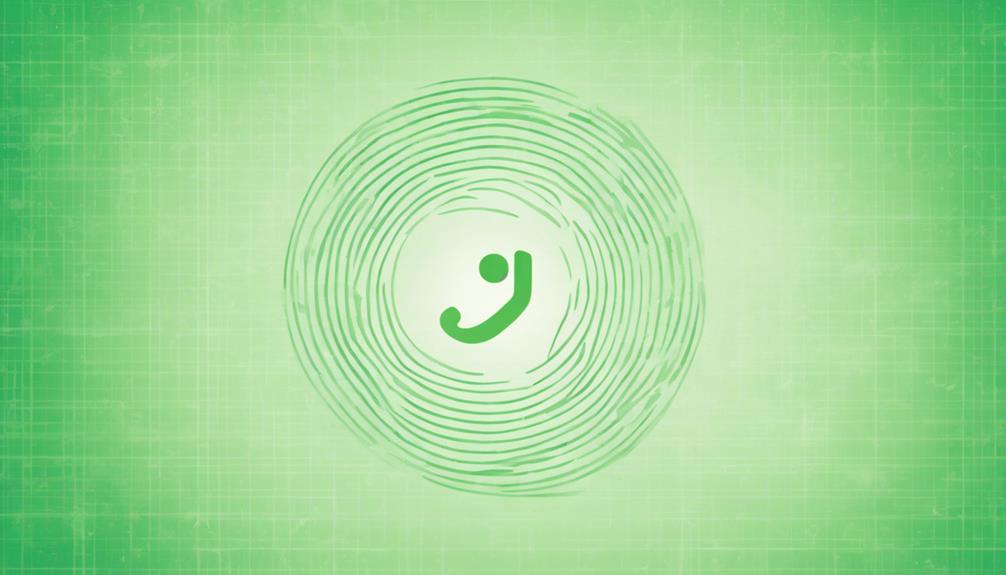
You identify a negative drug test result by looking for two colored lines in both the Control and Test Regions of the test strip. The presence of two lines, regardless of color intensity, indicates a negative result for the tested substances.
Even faint lines in the Control and Test Regions are still considered negative results as long as they're visible. A negative drug test result suggests that the concentration of drugs in the urine sample is below the designated cutoff level.
This doesn't necessarily mean you haven't used drugs recently, but rather that the tested substances are absent or below the set threshold. A negative result provides assurance that the drug concentration is within an acceptable range.
It's essential to understand that a negative drug test result isn't a guarantee of complete abstinence, but rather an indication of the absence of drugs above the set limit. By recognizing the visible lines on the test strip, you can confidently determine a negative drug test result.
Identifying a Positive Result
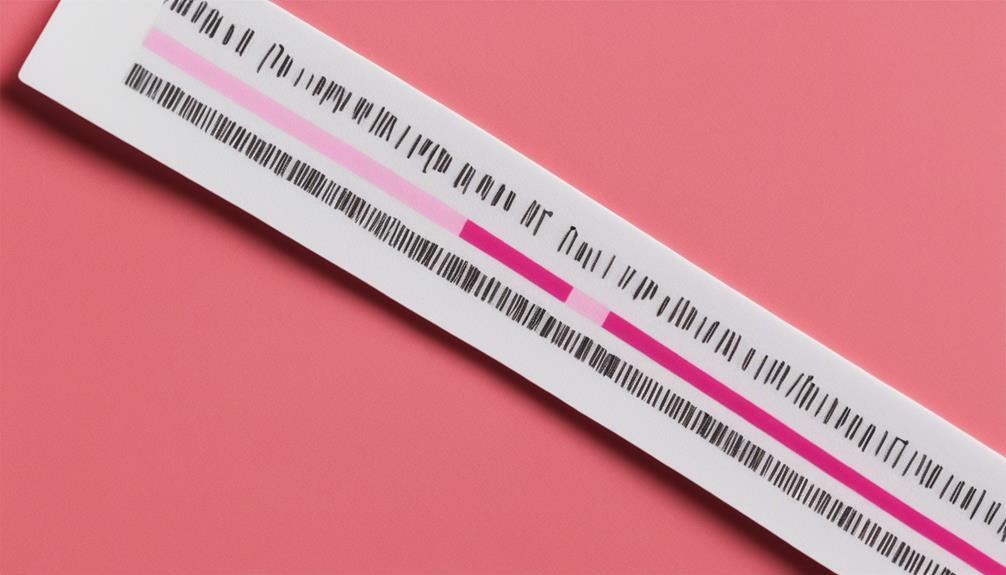
Now that you've determined a negative result by identifying the presence of two colored lines, it's equally crucial to recognize the signs of a positive drug test result, which indicates the presence of a drug or its metabolites in the urine sample above the designated cutoff level.
A positive drug test result indicates recent drug use or exposure to the substance being tested for. Here are some key things to know:
- A positive result shows the presence of a drug or its metabolites in the urine sample above the designated cutoff level.
- Confirmatory testing may be required to validate the positive result and rule out any potential false positives.
- Prescription drug cross-reactivity can sometimes lead to false positive results in drug tests.
- Contacting the testing facility or healthcare provider for further guidance is recommended upon receiving a positive drug test result.
Upon receiving a positive drug test result, it's crucial to understand what it means and what steps to take next. Remember, a positive result doesn't necessarily mean you've used drugs – it could be due to cross-reactivity or other factors. Seek guidance from the testing facility or healthcare provider to determine the best course of action.
Common False Positives
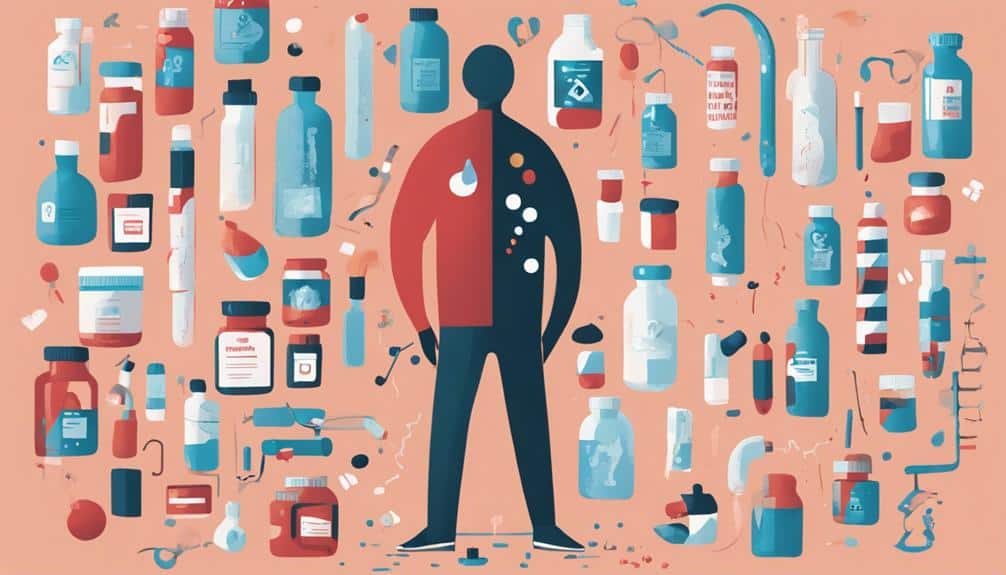
As you review your drug test results, it's important to take into account the potential for false positives. Certain medications, painkillers, and even foods or supplements you've consumed can trigger a false positive result.
You'll want to recognize how these factors can impact your test results to guarantee accuracy.
Certain Medications
It's crucial to disclose your medication use to the testing facility, as certain medications, including over-the-counter remedies and prescription drugs, can trigger false positive results on drug tests.
You may be surprised to learn that some common medications can lead to false positives on drug tests. Here are some examples:
- Over-the-counter medications like Sudafed or ibuprofen may cause false positives for substances like amphetamines or THC.
- Prescription drugs like antidepressants or antihistamines can also trigger false positives on drug tests.
- Informing the testing facility about any medications you're taking is important to avoid false positive results.
- Confirmatory testing can help differentiate between actual drug use and false positives from medications.
Painkiller Interference
You may be unaware that certain painkillers in your system can lead to false positives on drug tests. Ibuprofen, naproxen, and aspirin, in particular, can cause inaccurate results. These painkillers may show up as THC, barbiturates, or benzodiazepines in urine drug tests, leading to false accusations of drug use. This is due to cross-reactivity, a phenomenon where the drug test mistakenly identifies the painkiller as an illegal substance.
To avoid false positives, it's important to inform the testing facility about any medications, including painkillers, you're taking. This information helps the testing facility to take into account potential interference when interpreting the results.
However, even with disclosure, false positives can still occur. In such cases, confirmatory tests are necessary to differentiate between painkiller interference and actual drug use. These additional tests can help clarify the results and guarantee accuracy.
Food and Supplements
When taking a drug test, it's not just medications that can lead to false positives – your diet and supplement routine can also impact the results, as certain foods and supplements can trigger inaccurate readings. This is because some substances can mimic the presence of drugs in your system, leading to false positives.
Here are some examples of foods and supplements that can cause false positives:
Certain foods like poppy seeds, hemp seeds, and tonic water** can lead to false positives for opioids, marijuana, and alcohol, respectively.
Ibuprofen, naproxen, and cold medications containing pseudoephedrine** can trigger false positives for THC, amphetamines, and opioids.
Vitamin B supplements**, including riboflavin and B12, may cause false positives for THC in drug tests.
Some energy drinks, weight loss supplements**, and protein powders can result in false positives for various drugs like amphetamines and opiates.
It's essential to be aware of these potential false positives to avoid unnecessary stress and consequences. If you're concerned about the accuracy of your drug test results, it's best to consult with a medical professional or the testing facility for guidance.
Cutoff Levels for Drug Tests
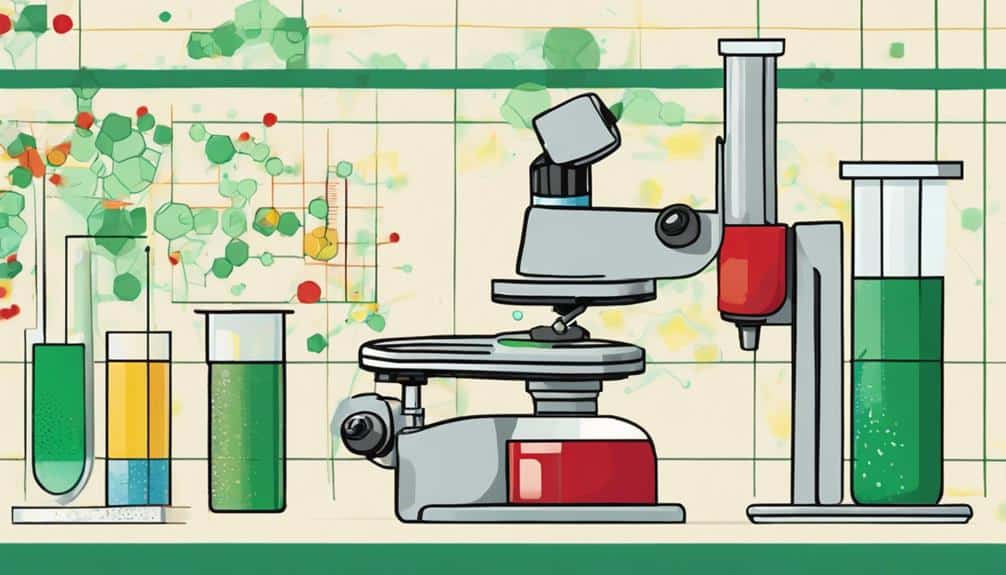
What sets the threshold for a positive or negative drug test result is the carefully calibrated cutoff level, a predetermined value that distinguishes between drug use and non-use.
You should know that cutoff levels in drug tests are set thresholds that determine whether a drug test result is positive or negative. Different drugs have different cutoff levels based on their detection window and concentration in the body. For instance, a drug with a shorter detection window will have a lower cutoff level to guarantee accurate detection.
Cutoff levels are established to reduce false positives and guarantee accurate detection of drug use. You need to understand that lower cutoff levels increase test sensitivity, while higher cutoff levels decrease the likelihood of false positives. This means that if a drug test has a lower cutoff level, it's more likely to detect even small amounts of the drug. On the other hand, a higher cutoff level may not detect small amounts, but it reduces the chance of false positives.
Understanding cutoff levels is essential for interpreting drug test results and determining whether a test was passed or failed.
Types of Drug Tests Available

Drug testing methods vary, and several types are available to detect drug use, each with its own strengths and limitations. You may be wondering which type of test is most suitable for your needs.
Here are some common types of drug tests:
- Urine drug testing: Cost-effective and convenient, making it the most commonly used method for drug screening.
- Hair drug tests: Providing a historical record of drug use, with a longer detection window compared to urine tests.
- Blood tests: More invasive and expensive, but offering accurate results for recent drug use within a few days.
- Saliva tests: Non-invasive and easy to administer, detecting recent drug use within a short timeframe.
Each type of test has its own advantages and disadvantages. Understanding the strengths and limitations of each test is essential for effective drug screening.
Drug Testing for Employment

As a job seeker, you're likely to encounter pre-employment drug testing, an important step in many hiring processes. This screening aims to guarantee a safe and drug-free work environment, which is vital for various industries. Employers use drug tests to evaluate your fitness for the job, and the results may have a considerable impact on the hiring decision. It's crucial to understand the drug test procedures and result interpretation to navigate the pre-employment screening process successfully.
Positive drug testing can lead to the withdrawal of a job offer or employment termination. Hence, it's important to be aware of the drug testing process and what it entails. As a job applicant, you should be prepared to undergo drug testing as part of the hiring process. Familiarize yourself with the drug test procedures, and make sure you understand how the results will be interpreted. This knowledge will help you feel more confident and prepared throughout the pre-employment screening process.
Receiving Positive Test Results
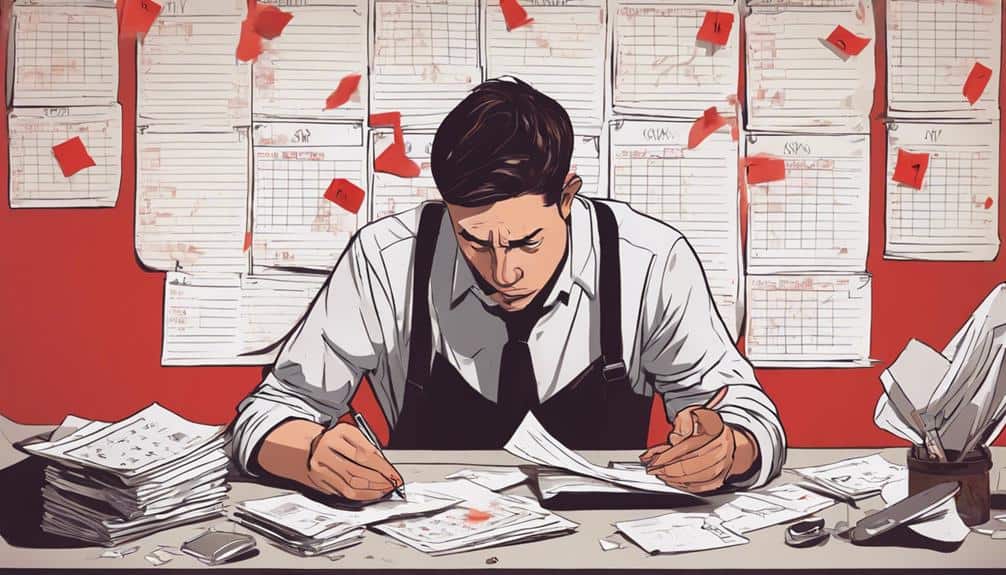
If you receive a positive result, it's important to understand what this outcome implies and the next steps you should take. A positive drug test result indicates the presence of a drug or its metabolites above the designated cutoff level, suggesting recent drug use or exposure to the substance being tested for.
However, it's vital to take into account the possibility of false positive results, which can occur due to various factors, including prescription drug cross-reactivity. To guarantee accurate interpretation, additional confirmatory testing may be required to validate the positive result.
Here are some key considerations when receiving positive drug test results:
- Confirmatory testing may be necessary to rule out false positives
- Prescription drug cross-reactivity can lead to false positive results
- Accurate interpretation of test results is crucial for appropriate actions
- Further consultation or testing may be necessary for accurate interpretation and next steps
What to Do After a Failed Test

After failing a drug test, you should expect your employer to take immediate action, which may include offering resources for rehabilitation or counseling, initiating disciplinary proceedings, or requiring you to complete a substance abuse program as a condition of returning to work. It's essential to understand the consequences of a failed drug test, which can range from job loss to ineligibility for certain positions.
Here's a breakdown of what you can expect:
| Consequence | Action | Next Steps |
|---|---|---|
| Rehabilitation | Employer offers resources | Attend counseling sessions |
| Disciplinary Action | Employer initiates proceedings | Meet with HR to discuss consequences |
| Substance Abuse Program | Complete program as condition of return-to-work | Enroll in program and provide proof of completion |
| Job Loss | Termination of employment | Seek new employment opportunities |
| Ineligibility | Ineligible for certain positions | Explore alternative career paths |
Understanding Test Sensitivity
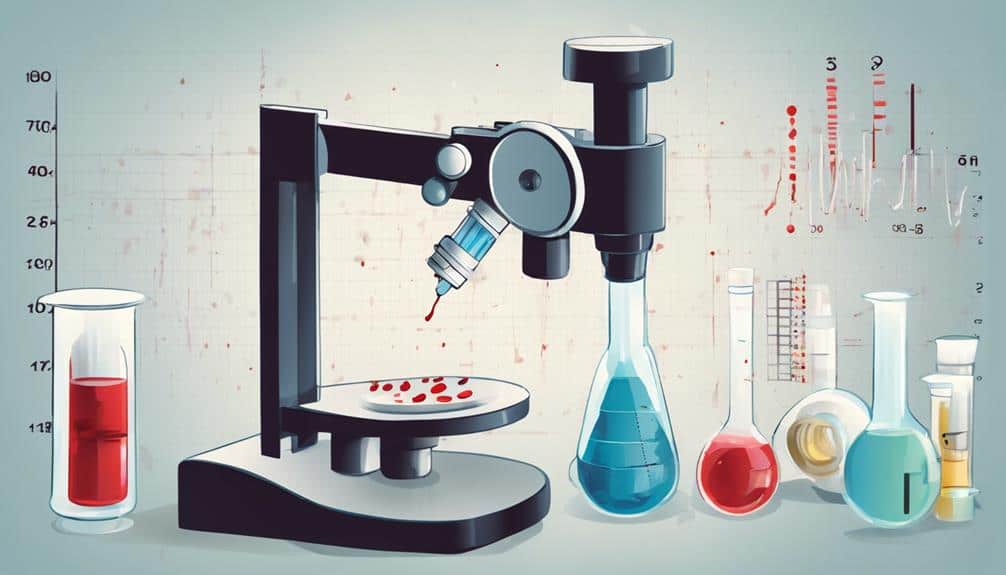
You need to understand that test sensitivity, which determines a drug test's ability to detect specific substances at certain concentrations, plays a critical role in interpreting your drug test results accurately. This is because sensitivity levels vary based on the drug being tested and the cutoff threshold set by the testing facility.
Here are some key points to keep in mind:
- Lower cutoff levels increase test sensitivity, allowing for detection of lower drug concentrations.
- Understanding the sensitivity of a drug test is vital for interpreting results accurately.
- Higher sensitivity levels may lead to more false positives, while lower sensitivity levels may result in false negatives.
- Sensitivity levels impact the reliability of your test results, so it's crucial to understand how they affect your drug test outcome.
Drug Test Result Interpretation

Accurately interpreting drug test results requires a clear understanding of the visual indicators on the test device. Misinterpretation can lead to incorrect conclusions about drug use.
When interpreting your drug test results, it's important to examine the Control Region and Test Region carefully. A negative drug test result typically shows two colored lines in the Control and Test Regions, indicating no presence of tested drugs above the cutoff level. On the other hand, positive drug test results typically display only one line in the Control Region, indicating the presence of drugs above the cutoff level.
It's crucial to note that faint lines in the Test Region are still considered negative results as long as there's a colored line in the Control Region. However, if no line appears in the Control Region, the drug test result is considered invalid, and it may require repeating the test with a new card/cup.
To ensure accurate interpretation, it's important to follow the instructions carefully. Invalid results can occur due to incorrect procedures, insufficient specimen volume, or faulty tests. By carefully examining the visual indicators and following the instructions, you can accurately interpret your drug test results and make informed decisions.
How Long Do Results Take

The time it takes to receive drug test results varies depending on the testing method and laboratory processing times, but typically ranges from a few hours to several business days. You can expect to receive your results through various channels, such as phone calls, emails, online portals, or traditional mail.
Here are some key facts to keep in mind:
- Results are typically processed and delivered within a few business days
- Negative results indicate that no drugs were detected in the sample above the specified cutoff levels
- Positive results suggest the presence of drugs in the sample above the designated threshold for detection
- Confirmatory tests may be conducted for more accurate and specific results in case of a positive initial test
Keep in mind that the testing method and laboratory processing times can affect how long it takes to receive your results. Understanding the timeline can help you plan and prepare for the outcome of your drug test.
Follow-Up Testing Procedures
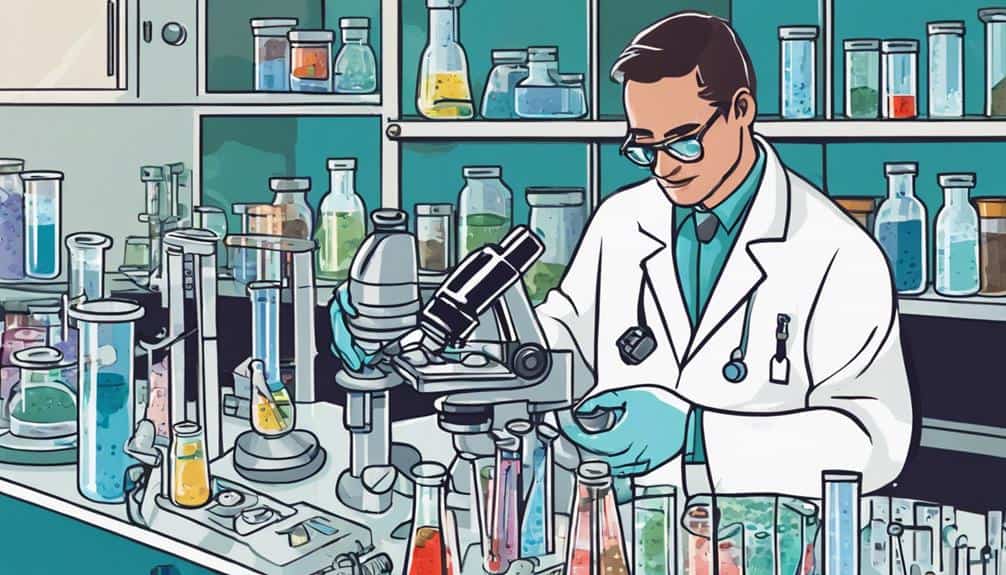
As you navigate the follow-up testing procedures, you'll encounter two pivotal steps: confirming negative results and repeat testing protocols.
You'll want to understand these processes to guarantee the accuracy of your drug test results.
Confirming Negative Results
You'll undergo follow-up testing procedures to confirm the accuracy of your initial negative drug test results. This is an essential step to guarantee the reliability of the outcome. Confirmatory drug testing is used to validate the results and rule out any potential false negatives.
The follow-up testing procedures involve more sensitive testing methods to detect lower drug levels. This provides more specific results, giving you a clearer picture of your drug test outcome.
Here are some key aspects of confirming negative results:
- Confirmatory tests are used to validate the initial results and provide more specific outcomes.
- Follow-up testing helps to detect drug levels that may have been missed in the initial test.
- Additional testing is necessary to rule out false negatives and ensure reliable results.
- The goal of follow-up testing is to confirm the absence of drugs in the system and verify negative drug test outcomes.
Repeat Testing Protocols
What triggers the implementation of repeat testing protocols, also known as follow-up testing procedures, and how do they contribute to the overall accuracy of drug test results?
You may be wondering why you're being asked to take another drug test. The reason is simple: to confirm the validity and accuracy of the initial result.
Repeat testing protocols involve conducting additional drug tests to corroborate the initial result, eliminating any doubts or ambiguities. This follow-up testing procedure is essential in verifying the accuracy of previous drug test results, especially for individuals with ambiguous or inconclusive initial results.
By repeating the test, you can be certain that the outcome is reliable and accurate. Employers may request repeat testing to ensure consistency and validity of drug test results, as it helps eliminate false positives and negatives, providing a more reliable outcome.
Through repeat testing protocols, you can rest assured that the result is accurate, and any doubts or concerns are alleviated.
Frequently Asked Questions
When Will I Know if I Failed a Drug Test?
When will you know if you failed a drug test? Typically, you'll find out within a few business days after providing the sample. The results will be delivered through phone, email, online portals, or mail.
If you didn't pass, it means drugs were detected above the specified cutoff levels in your system. You'll usually get preliminary results initially, with confirmatory tests providing more detailed information if needed. If this happens, it’s important to speak with a medical professional to understand the results and determine the best course of action. They can provide guidance on next steps and any potential consequences of the positive result. In addition to following their recommendations, it’s essential to consider best practices for wisdom teeth removal to ensure a smooth recovery and overall positive outcome.
How Do I Know if I Passed My Drug Test Labcorp?
You'll know you passed your Labcorp drug test when you receive a negative result notification via email, phone, or online portal. This means no drugs were detected above the established cutoff levels in your sample.
If you're unsure, check your results online or contact Labcorp directly. Remember to review their guidelines on detection windows and cutoff levels to understand your test results accurately.
How Long Does It Take to Confirm a Positive Drug Test?
You're wondering how long it takes to confirm a positive drug test.
The answer depends on the testing facility's processing time. Typically, it takes a few days to complete the confirmation process.
After an initial positive result, a confirmatory test is conducted to validate the findings. This step is essential for accuracy and rules out false positives.
You'll have to wait a bit, but the confirmation process is vital for accurate results.
How Long Does It Take for a Drug Test to Come Back for a Job?
As you wait anxiously for your drug test results, it's like being in a holding pattern, circling above the runway, waiting for clearance to land.
Typically, you can expect to receive your results within a few business days, but this timeline can vary depending on the testing facility and method used.
Your employer will usually notify you via phone, email, online portal, or mail once the results are in.

